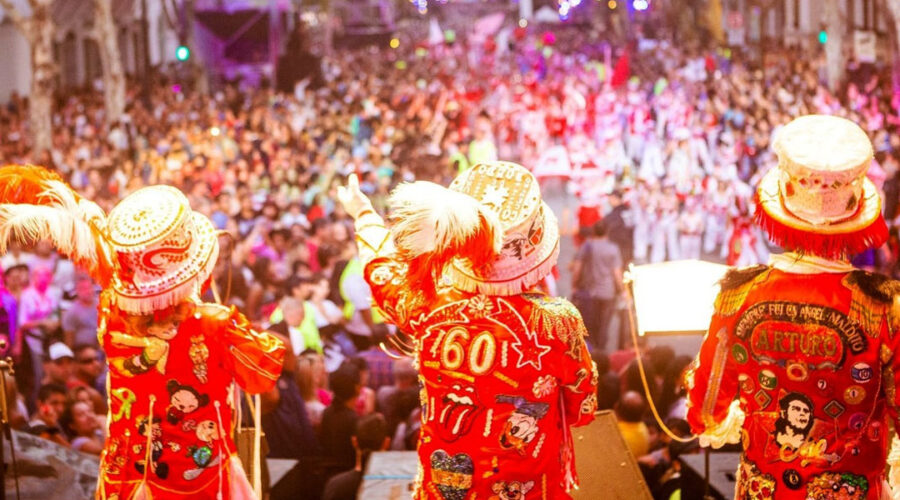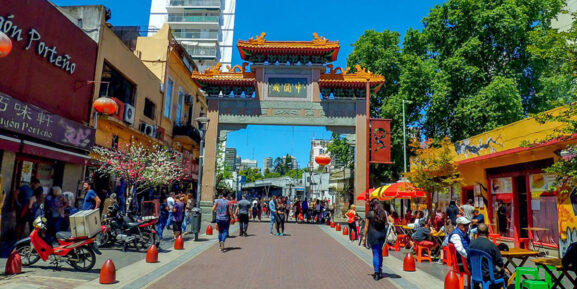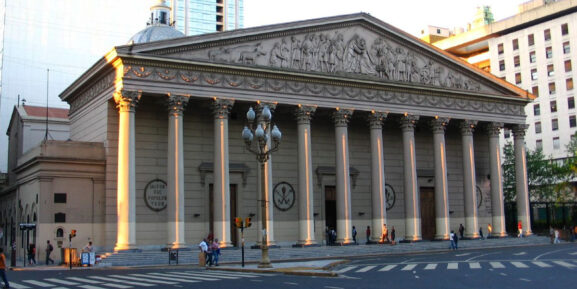Carnival in Buenos Aires
Carnival in Buenos Aires, all the details about one of the most colorful and festive celebrations in Argentina and the city.
Guaranteed fun, bright colors, costumes, glitter and lots of music, are some of the characteristics that make Carnival stand out. It is one of the longest celebrations and the most attractive of all.
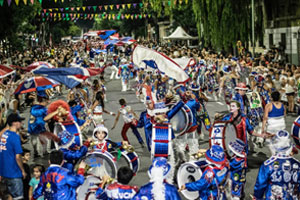 It is celebrated throughout the country and in each area its songs and lyrics, its music and dance, and even its colors and costumes vary.
It is celebrated throughout the country and in each area its songs and lyrics, its music and dance, and even its colors and costumes vary.
Through the streets and avenues of Buenos Aires, you will be able to see the display of parades and corsos, stages and colored banners, where hundreds of murgas make their way, dazzling spectators with their colorful costumes of sequins, glitter, ornaments, and spreading their rhythm.
Each murga has its imprint, different from the others. An aesthetic of their own, an identity and a style that is noticeable and reflected in their music, their dance steps, their songs and, also, in the specific colors, their costumes and their puppets. Yes, the carnival also has a background of pre-production throughout the year. The murgas not only rehearse the dances and music, but also take the time to prepare the entire staging for the long-awaited display of Carnival.
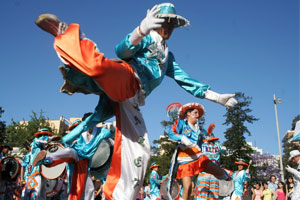 Buenos Aires is the only city where each neighborhood has one or more murgas per neighborhood. They move through the parades, changing their place of presentation and visiting all the stages during the weekends of February. In other cases, as in Gualeguaychú, Entre Ríos, the Carnival celebration takes place in a single space called corsódromo, where all the murgas parade in the same place.
Buenos Aires is the only city where each neighborhood has one or more murgas per neighborhood. They move through the parades, changing their place of presentation and visiting all the stages during the weekends of February. In other cases, as in Gualeguaychú, Entre Ríos, the Carnival celebration takes place in a single space called corsódromo, where all the murgas parade in the same place.
In 1997, the murgas were declared Cultural Heritage of the City of Buenos Aires. The songs and melodies of each one are the perfect ensemble between joy and humor, with some hints of historical and social criticism.
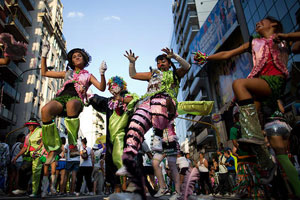 In addition to enjoying the murgas, in Carnival, spectators enjoy other activities such as body painting, games and contests, as well as playing with water or foam. Being held in the middle of the summer season as it is in February in Buenos Aires, it is an excellent reason to refresh yourself! For this reason, do not be surprised if someone throws foam at you as they pass because it is the joke that is made at this party.
In addition to enjoying the murgas, in Carnival, spectators enjoy other activities such as body painting, games and contests, as well as playing with water or foam. Being held in the middle of the summer season as it is in February in Buenos Aires, it is an excellent reason to refresh yourself! For this reason, do not be surprised if someone throws foam at you as they pass because it is the joke that is made at this party.
The Carnival settings are the streets, amphitheatres, parks and squares, always in open and public places. A more community celebration is held on the last day of Carnival in the Plaza de Mayo.
The beginnings of this festival go back to the end of the 19th century to become popular at great speed in all the neighborhoods of the city. It is a celebration marked by a social reality of that time, where the daily problems of the social groups of those years are dramatized. With the passing of time, several tried to silence the Carnival, but luckily, they were unsuccessful. Thus, it managed to establish itself as the most longed-for festivity of the year, which knows no silences or limits.
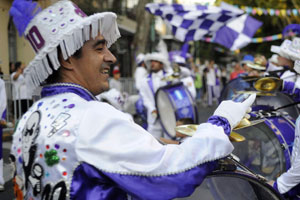 Today, the places where Carnival is celebrated are transformed into spaces for dancing, meeting and partying. Bass drums, trumpets, drums and cymbals, are the ones who direct the baton to create the melody and rhythm of this celebration. Every year, more than 100 murgas parade and display their carnival art. It is usually held on Saturdays from 7:00 p.m. to 2:00 a.m. and on Sundays from 7:00 p.m. to 12:00 a.m. Admission is free and it is a show for all audiences. You will even see that each murga has a great variety of ages in terms of its dancers and musicians!
Today, the places where Carnival is celebrated are transformed into spaces for dancing, meeting and partying. Bass drums, trumpets, drums and cymbals, are the ones who direct the baton to create the melody and rhythm of this celebration. Every year, more than 100 murgas parade and display their carnival art. It is usually held on Saturdays from 7:00 p.m. to 2:00 a.m. and on Sundays from 7:00 p.m. to 12:00 a.m. Admission is free and it is a show for all audiences. You will even see that each murga has a great variety of ages in terms of its dancers and musicians!
On the last Sunday of Carnival, it is celebrated en masse in the Plaza de Mayo, to close this cycle. An immense stage and a beautiful display take place at the intersection between 9 of July Avenue and May Avenue, from 3 to 10pm. Here, you can find food stalls, children’s shows, different cultural attractions, as well as the best murga parade in the entire city.
Due to Carnival, there are two days in February that are not working days. Therefore, we recommend you check the date depending on the year, since they are not always the same days, but they are usually the last days of February.
We invite you to join our Free Tours here and continue getting to know Buenos Aires together!

